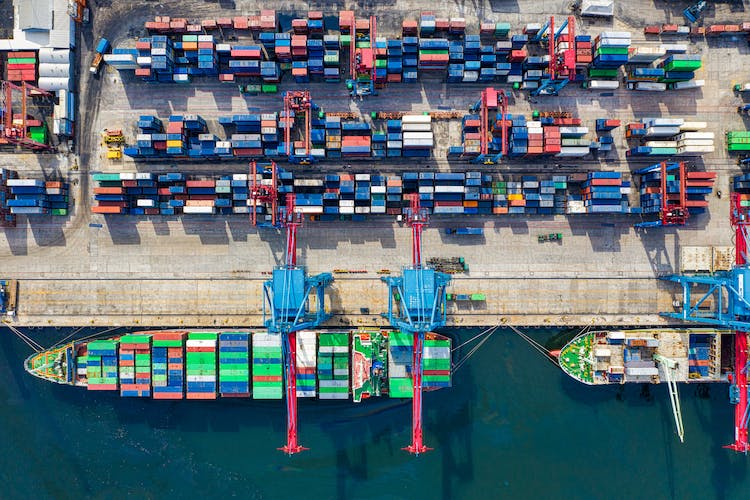[ad_1]
Laser engraving is an essential part of numerous industries, ranging from aerospace manufacturing to medical devices. Companies often rely on this marking method to add serial numbers, barcodes or other tracking details. Those details make it easier to trace a product throughout its life span, confirming whether it lasts as long as expected.
Laser engraving is also important for allowing people to add artistry to their work. Perhaps they want a laser-engraved sign to boost brand recognition in a saturated market.
“A jewelry company could differentiate itself with laser-engraved jewelry featuring a graphic or a quote in a distinctive font.”
People also use laser engraving to add personalized touches to trophies, tankards and other keepsakes. These options increase appreciation in recipients and can make companies more competitive. If a business uses laser engraving to personalize its products, that characteristic can get customers interested more than non-personalized options would.
Relatedly, some forward-thinking company leaders are further improving laser-engraving efforts at their businesses by combining them with artificial intelligence. While AI has reshaped numerous processes and industries, it’s particularly well-suited for laser engraving machines.
Create Optimized Images
The first step of any artistry-driven project with a laser engraving machine is to choose an image that’s well-suited to the available equipment. However, that’s not always easy. Some companies have developed AI-driven tools to help.
One example is Magic Canvas from Glowforge. A user starts by choosing a broad style. They combine it with a prompt that specifies their desired designs. People can also enter multiple prompts if the first generated image isn’t quite what they’re going for with the design. Cloud-based technology helps people create laser-optimized images faster, even without professional artistic experience.
Some people have also experimented with using Midjourney — another AI-powered tool — to help them create higher-quality images that will give them great results with laser engraving machines. These options enable people to overcome creative obstacles and pursue ideas they might not have otherwise considered.
Individuals can use other generative AI tools, such as ChatGPT, to get their creative juices flowing, too. What are some artistic ways to use laser engravers that they haven’t tried yet? Even if some efforts don’t come out as expected, people can at least broaden their horizons and feel empowered to use their tools and knowledge differently.
If laser-engraving professionals have existing designs to improve, specialized AI tools might shorten the enhancement time. AI could also suggest optimization strategies or give people decision-making support. While such applications aren’t yet typical for laser engraving, they’re becoming more widespread for other types of customization. Manufacturers can explore those use cases to see which are most appropriate for laser engraving.
Improve Workflows
Concentrated laser beams require just a few seconds to cut some designs into materials. Although more complicated plans take longer to execute, a laser engraver is still an extremely efficient machine. Some users shorten time frames even more with artificial intelligence and automation.
That approach enables the laser engraving machine to self-correct mistakes, significantly increasing the percentage of products meeting quality control standards.
“Researchers from MIT also trained a deep-learning neural network algorithm for their SensiCut innovation. ”
This platform can identify common materials used in laser engraving and cutting workshops. Users then get personalized guidance about speed and power settings for the machine. Such insights could reduce waste and help people feel more confident about their projects.
Many university programs that train people for future manufacturing roles — including those that may require laser-engraving expertise — use high-tech training solutions that combine AI with virtual or augmented reality. Then, learners can solidify their skills in simulated but highly realistic environments. As they create strong foundations, they’ll be well-equipped to apply their new skills in the real world.
Suppose artistic laser engraving occurs in a large facility. In that case, decision-makers may rely on AI-powered robots to transfer materials, finished products or supplies to the right destinations within the building. Besides saving steps for workers, this process reduces the manual procedures that can cause injuries or fatigue. Then, employees can devote more time and energy to creating beautiful, memorable pieces with laser engraving machines.
Still an Emerging Area of Technology
There are several primary ways people currently use AI to enhance their artistic laser engraving projects. However, applying this technology is still in the early stages. Tech enthusiasts will almost certainly see more innovative ways to work with it soon.
Decision-makers must adopt pioneering approaches and keep an open mind about how artificial intelligence could enhance current laser-engraving processes. Even if not all of them deliver the expected results, experimentation is essential for showing people what’s possible and helping them learn through experience.
One possibility for encouraging creativity and artistry is to gradually invest in AI while maintaining a workplace that encourages people to break the boundaries associated with previous processes. When individuals work in places that prioritize innovation, they’ll feel empowered to combine AI and laser engraving in ways that could inspire their peers and lead to industry-wide improvements.
Also Read The Effectiveness of AI in Color Analysis
[ad_2]
Source link



